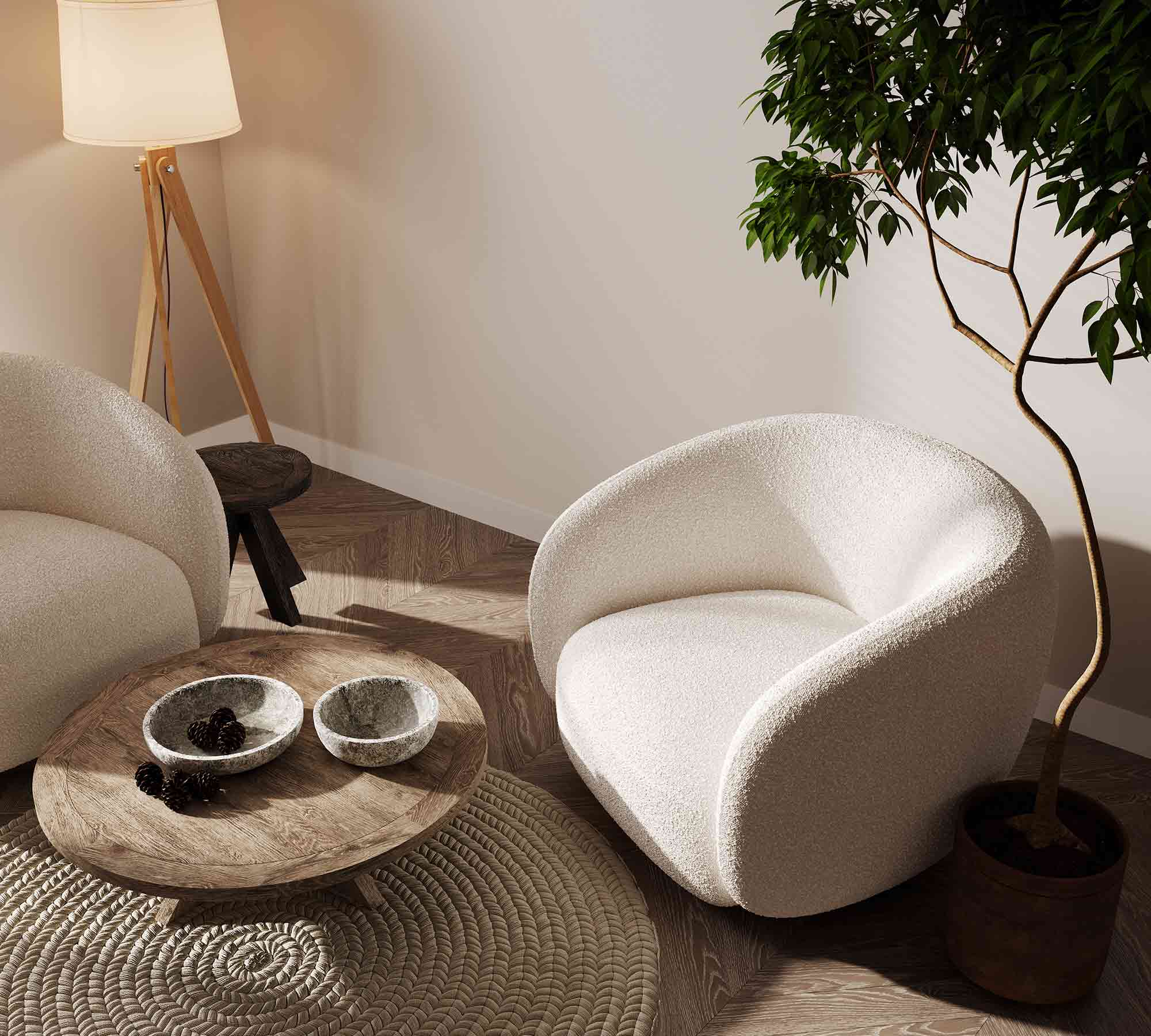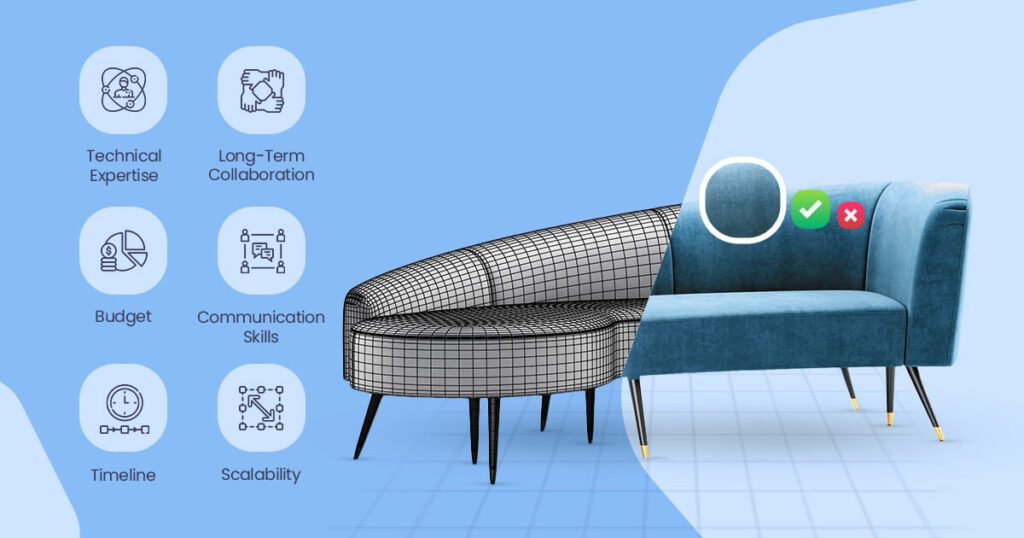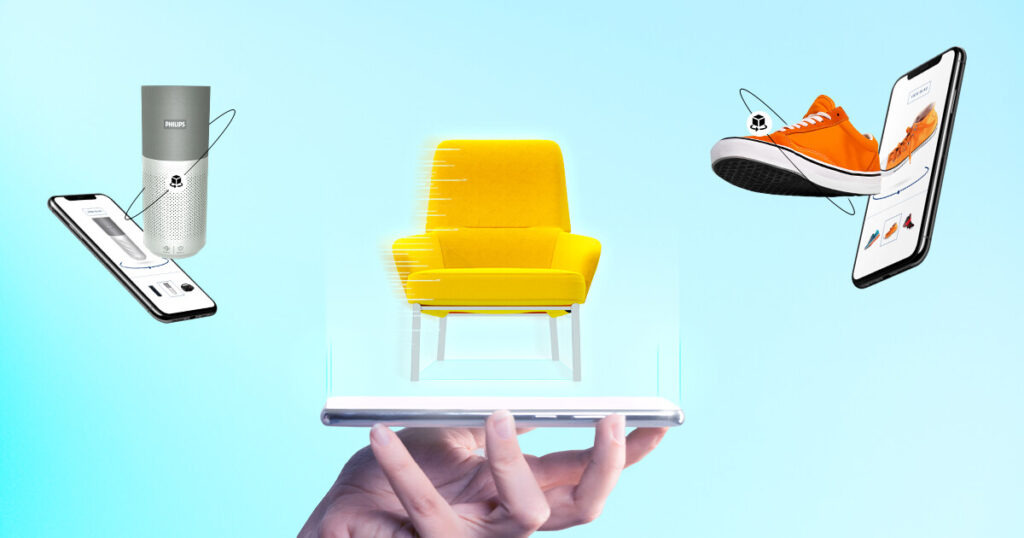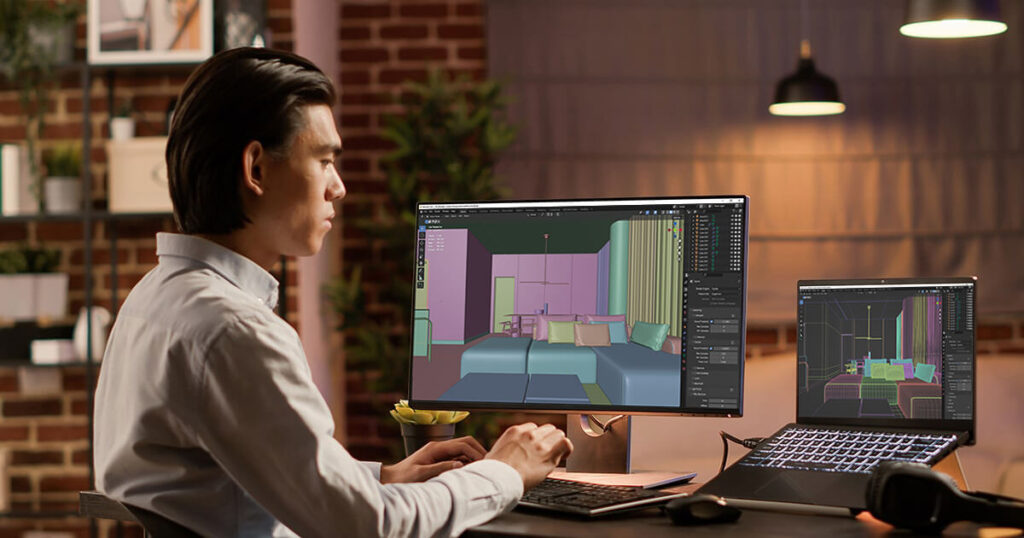To create high-quality images that look as if they are real-life objects, modern advertising depends on such imperturbable techniques as 3D rendering used to depict 3D models together with this advanced software. In the furniture industry, this implies highly detailed and precise representations of products, including textures and lighting effects. However, the trend towards modernity in advertising means that it has never been more important to have moving images that can grab attention. Nowadays people want involvement where they are; real-life situations involving clients delivered through their devices are what they expect today.
These modern advertising places have left behind static pictures and old photographic charms with great flexibility, like 3D rendering. With this technology, brands can showcase their furniture in varying contexts, such as varying room settings or with different materials, all without having to create any physical prototypes. Besides, 360-degree product views, virtual staging and augmented reality can use 3D renderings thereby giving the customers an interactive touch.
Therefore, by using 3D-rendering furniture, advertisements can grab attention, shape strong pictorial identities, and come up with more successful visually influenced campaigns that promote retention rates among customers and increase sales.

The Evolution of Modern Advertising Techniques
Historical Overview of Advertising Methodologies
The evolution of advertising has come from mere paper ads in the daily newspapers to highly intricate strategies that are aired on TV and even radio. The initial forms employed static pictures as well as universal messages with very little engagement between producers and users. Even though they served their purpose well during that time, they did not have the vibrancy and interaction required by the modern advertising world.
The Transition from Traditional Media to Digital Platforms
And that has made it possible for us to be more targeted in our approach, to connect with our audiences at a personal level. The new advertising has a more holistic approach, using 3D rendering techniques together with personalization and data-driven insights, which are vital components of modern advertisements. It also elevates brand preference and brand loyalty (Pushpinder Singh). The trends towards creating interactive targeted content began with the emergence of social media platforms as well as the expansion of internet use.
Introduction of 3D Rendering as a Novel Approach in Advertising Campaigns
Technical advances in the digital sphere have led to the emergence of three-dimensional rendering as an innovative technique for making visually appealing and engaging advertisements. Therefore, this provides companies with an opportunity to showcase their merchandise in distinct and adjustable backgrounds, hence giving it a new direction in modern advertising.
Enhancing Visual Appeal and Engagement of Modern Advertising

The Role of 3D Rendering in Creating Captivating Visuals
3D rendering is vital in the modern advertising industry to enhance the aesthetics of promotional materials. 3D rendering can help furniture companies depict their wares in unbelievably detailed pictures by drawing on almost real images, thus bringing out the various textures, finishes, and lighting that are present. Such technology gives businesses an opportunity to depart from conventional photography by showing products in numerous backgrounds and styles, hence drawing customers’ attention and increasing involvement.

Case Studies of Successful Campaigns Utilizing 3D Technology
With tremendous success, many famous companies have implemented 3D rendering in their advertising plans. In fact, furniture businesses utilizing 3D images for virtual display or augmented reality encounter more customer participation and conversion rates. This campaign illustrates how modern advertising powered by three-dimensional technology switches from static positioning to a dynamic way of presenting a product, thus facilitating a better experience for clients.
The Psychological Impact of Immersive Designs on Consumer Behavior
The immersive 3D designs can have a profound impact on consumer behavior. By providing interaction and captivating visuals, the 3D rendering connects to the psychology of visualization enabling customers to imagine the product in their premises. This forms an emotional attachment to the item, which makes it urgent for someone to buy it and remain loyal to that brand. Such immersive experiences are therefore important in advertising today because they make one competitive and appealing to visually orientated clients.
Cost Efficiency and Accessibility of Modern Advertising

Analysis of Production Costs Associated with 3D Rendering
Although expensive initially as it requires specific software and a qualified workforce, 3D rendering pays off in the long run. Unlike standard advertisement endeavors like photography, which calls for substantial expenditures on actual prototypes, positioning arrangements, and streamlining, this implies that the use of 3D rendering enables furniture companies to design virtual prototypes that can be altered for various advertising campaigns. As a result, these adjustments lessen production expenses, making rendering through 3D modeling cheaper compared to other approaches employed in modern advertising.
Comparison with Traditional Advertising Methods
Traditional methods like photo shoots incur high costs in terms of hiring models, renting spaces, and making prototypes. Furthermore, it is time-consuming and expensive to recreate or adjust physical setups. In modern advertising, 3D rendering provides a more efficient option. This enables brands to present items in different environments and styles without incurring additional production costs. Three-dimensional images can also serve as digital assets on various platforms, such as social media, e-commerce, and augmented reality, thus maximizing the return on investment.
The Accessibility of 3D Tools for Businesses of All Sizes
3D rendering technology is now a matter of course, and the 3D rendering services for businesses can be used by all sizes. There is no need for big budgets for massive firms because small and medium businesses can utilize affordable software and freelance 3D artists to adopt 3D rendering in their modern promotional campaigns.
Conclusion
Modern advertising has been revolutionized by 3D rendering through its cost-effective, immersive, and visually captivating solutions for furniture brands. Our research on the changes in advertising techniques has shown that visual appeal can be improved with 3D technology, while engagement of consumer’s increased and long-term savings achieved as opposed to traditional approaches. Moreover, the accessibility of 3D rendering to all types of companies allows them to play on equal terms in the visually orientated marketplace.
As time goes on and technology progresses, the importance of 3D rendering in today’s advertising will increase. Because of improvements in augmented reality (AR), virtual reality (VR), and interactive content, 3D visuals will increasingly be key to creating customized and captivating experiences for customers. This way, brands adopting these innovations in their advertising strategies will have an upper hand with advanced visual content.
As we live in this era of technology, it becomes obligatory to remain pertinent through 3D rendering instruments because furniture companies that utilize such progress enjoy enriched advertising, heightened involvement with clients, and assurance they will stick to their marketing strategy for good.
FAQ:
Which modern advertising technique is 3D rendering revolutionizing?
Modern advertising methods are being transformed by 3D rendering through things like interactive 360-degree ads, immersive product visualization as well as augmented reality (AR) experiences and personal marketing. This increases realism, creativity, and interactivity, enabling brands to show their merchandise in very appealing, real-life, and active ways.
Which are the main advantages of employing 3D rendering in commercials for products?
Advertising 3D Renders: Benefits: create real images of commodities, save production costs, produce them quicker, adaptable, and more viewer friendly due to such 360 degrees in establishing sectors of views of the augmented reality experiences.
Why does the creation of dynamic advertising material need the use of 3D rendering?
For authentic visuals that are flexible and creative in terms of design, 3D rendering is necessary for making animated advertisement material. This also promotes better product display, attracts customers’ attention, and gives an opportunity for various views of the same item by different brands.
What effect does 3D rendering have on how consumers view advertisements?
How consumers view advertisements is greatly affected by 3D rendering, which makes visuals more immersive, real, and interesting. It allows for more detailed descriptions of products, thus increasing the interest of viewers, emotional connection to them, and trust in the brand, which results in better engagement and conversion rates.
In what ways do 3D visuals improve brand narratives in contemporary advertisements?
Brand stories are brought to life through 3D graphics that show things in detail, such that artists have the ability to plug images into the system and create anything they want as long as it can be portrayed visually. They attract notice, embellish the narration, and make listeners feel something; this is why commercials become fascinating and unforgettable.






